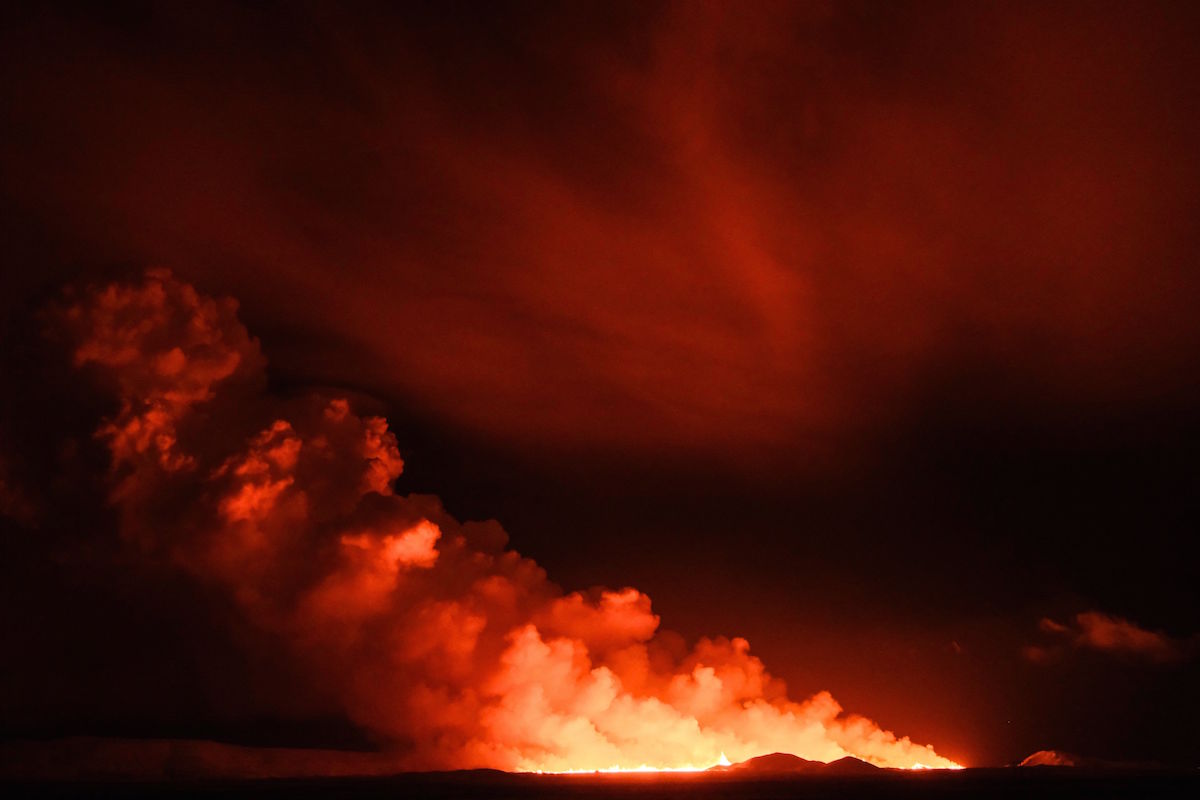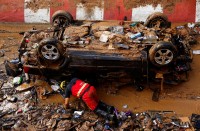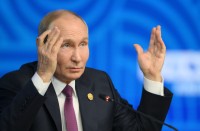
REYKJAVIK, Dec 20, 2023 (AFP) – A volcanic eruption that rocked Iceland this week diminished in intensity for a second day Wednesday, though media reports said a nearby evacuated fishing village would remain off limits for at least another week.
The eruption on the Reykjanes peninsula has produced spectacular lava flows, though they were now constrained to two craters, the Icelandic Meteorological Office (IMO) said in a statement Wednesday morning, down from three earlier.
“The power of the eruption has decreased with time as well as the seismicity and deformation,” IMO said in its latest update.
The eruption, which opened a fissure in the ground about four kilometres long, only three kilometres (1.8 miles) from the evacuated fishing port of Grindavik,began Monday evening after a “swarm” of small tremors.
Entry to Grindavik will remain blocked until at least December 28 while a new risk assessment is carried out, Icelandic broadcaster RUV reported. The popular Blue Lagoon tourist site also remains closed.
In the capital Reykjavik, life was little affected, partly because it is some 40 kilometres (25 miles) north-east of the eruption, but also because volcanos are part of life in Iceland.
“Everybody’s excited but also very calm about it. You can’t do anything about it. We’re used to it. You know Iceland, it’s powerful nature,” said Anna Dora, a 60-year-old shopkeeper in Reykjavik.
Amid weeks of warnings from scientists, the authorities built reinforcements around the Svartsengi geothermal plant, which is just two kilometres from the eruption and supplies electricity and water to 30,000 people on the peninsula.
“I actually work at the power plant Svartsengi so I’m pretty close to it but I think it’s OK. It started big but it’s getting really small now, so I’m not worried about it,” 37-year-old Arnar Flokason told AFP as he dropped off his child at school in Reykjavik.
Helga Gudjonsdottir, a 33-year-old office worker, also wasn’t too bothered about the flow of lava, saying it was “just something that is going to be happening for the next years.”
“It’s just something that we will have to live with,” she added.
“It’s going to be a tourist attraction again. We are hoping to boost the economy,” Lukasz Wrobel, a store manager who moved to Iceland from Poland six years ago, said. The Icelandic government has told people not to travel to the Reykjanes peninsula to see the volcanic activity, but many have not heeded the advice.
Volcanic eruptions are not uncommon in Iceland, which is home to 33 active volcano systems, the highest number in Europe.
But the Reykjanes peninsula had not experienced an eruption for eight centuries until 2021.
Since then, eruptions have struck in 2021, 2022 and earlier this year — all in remote, uninhabited areas.
Volcanologists say this could be the start of a new era of activity in the region.







